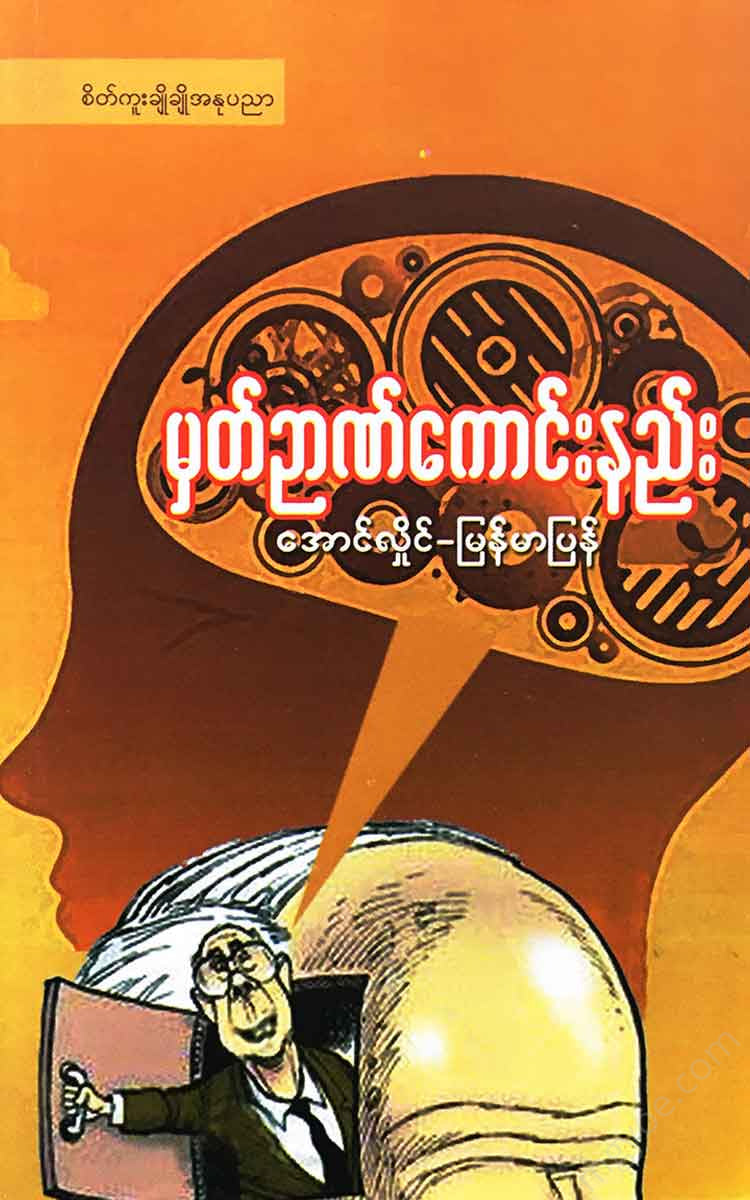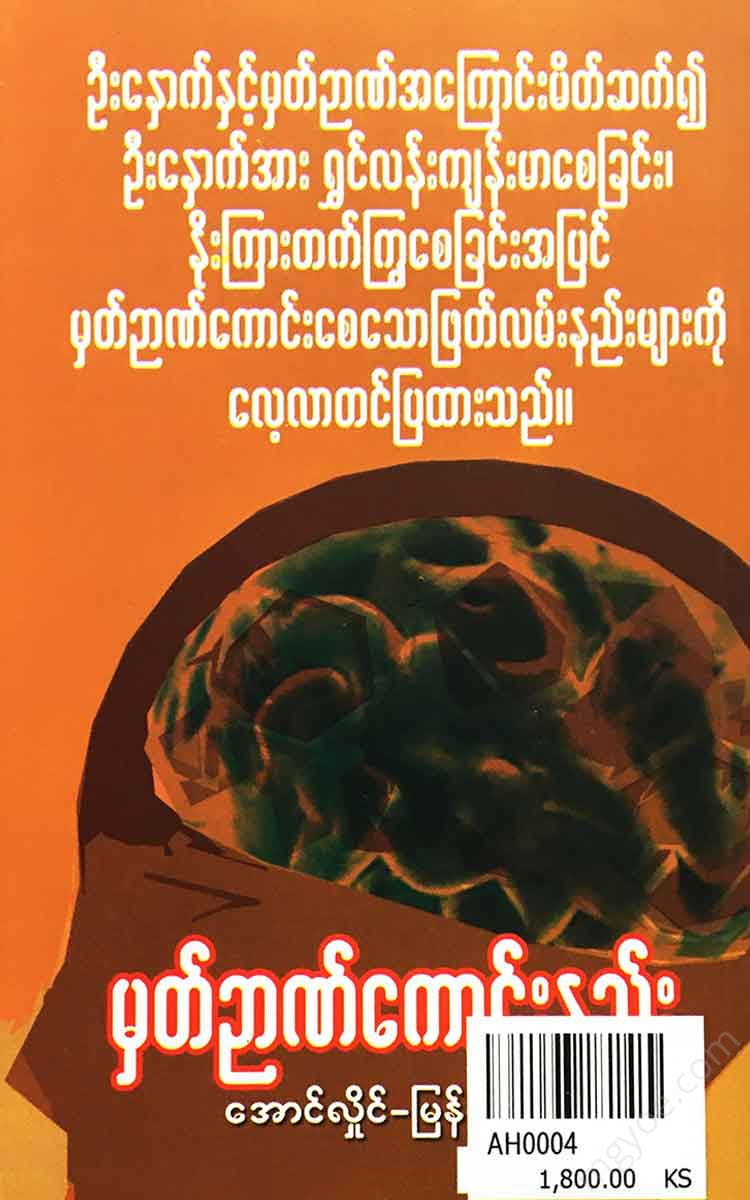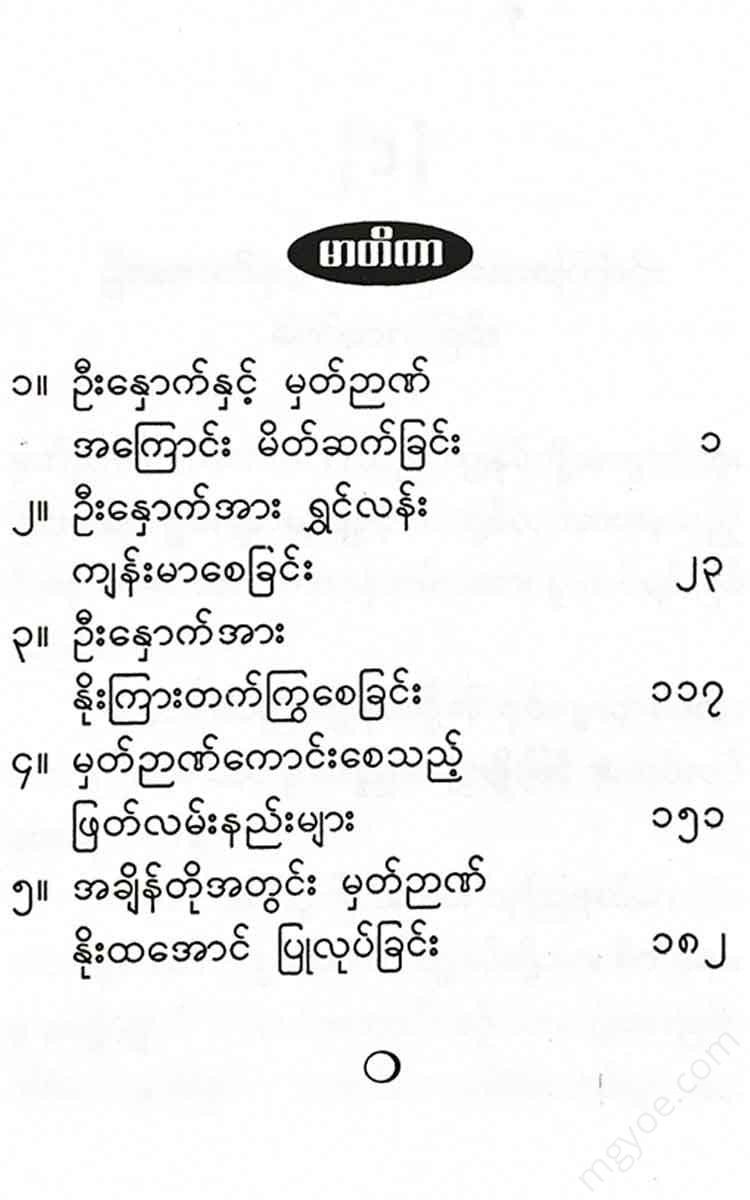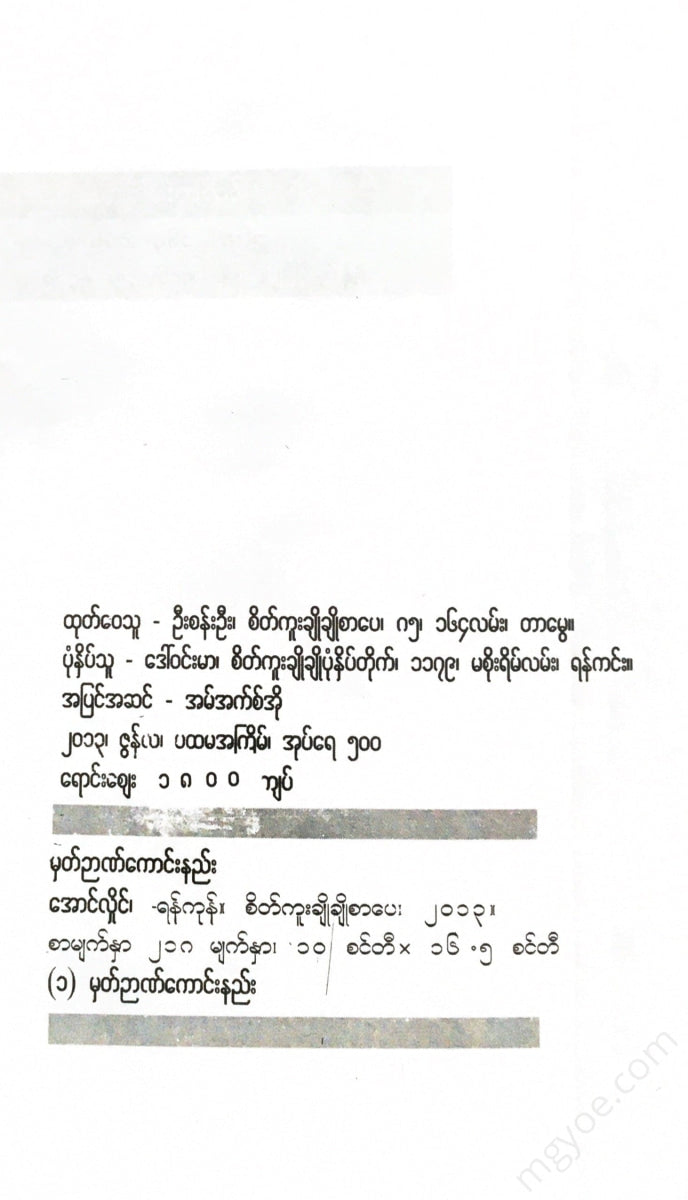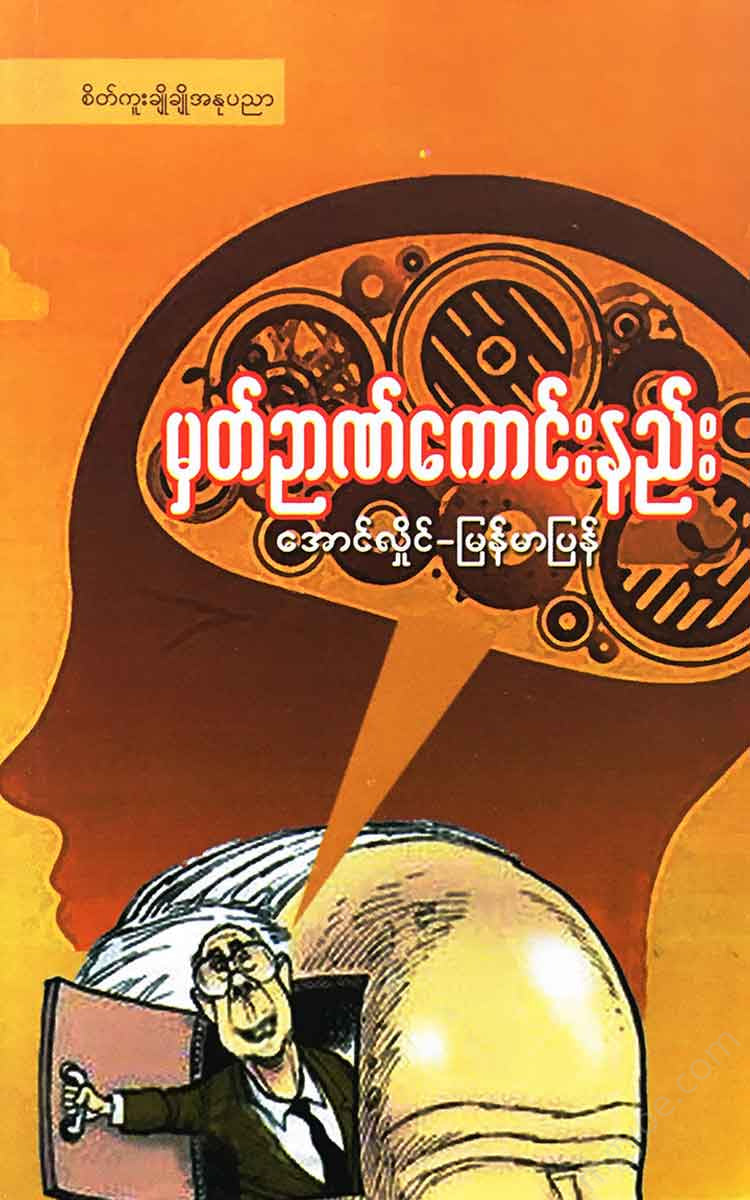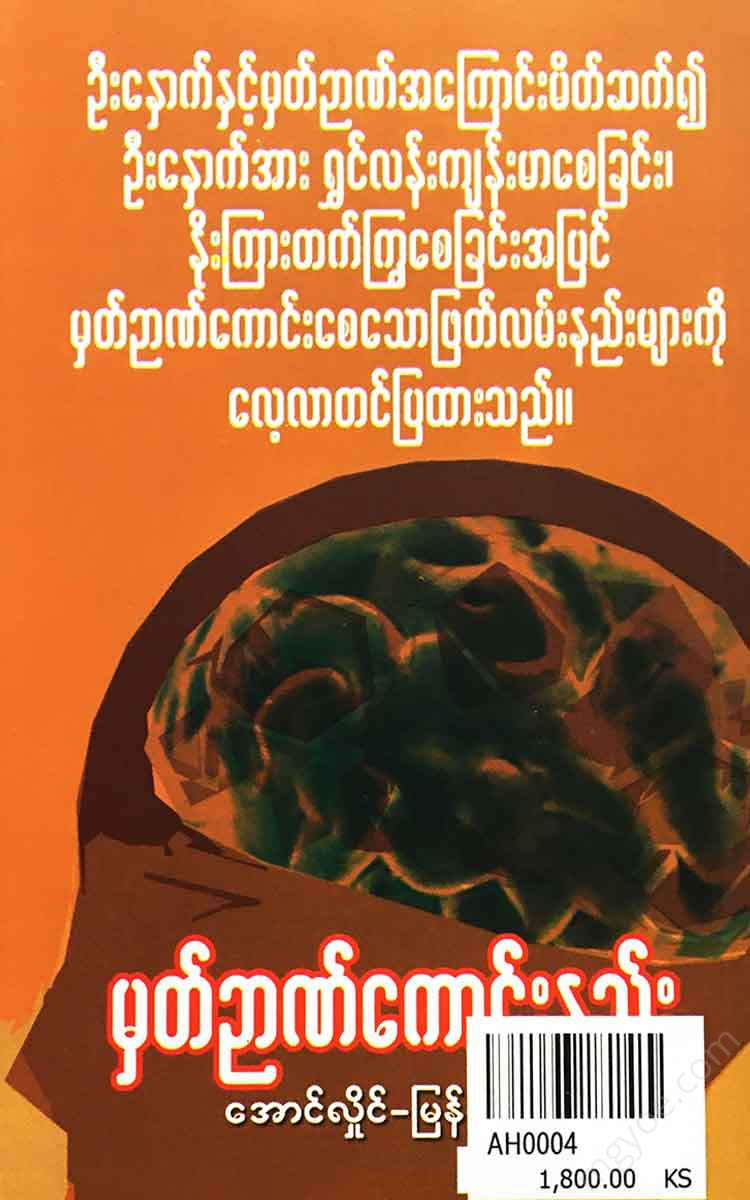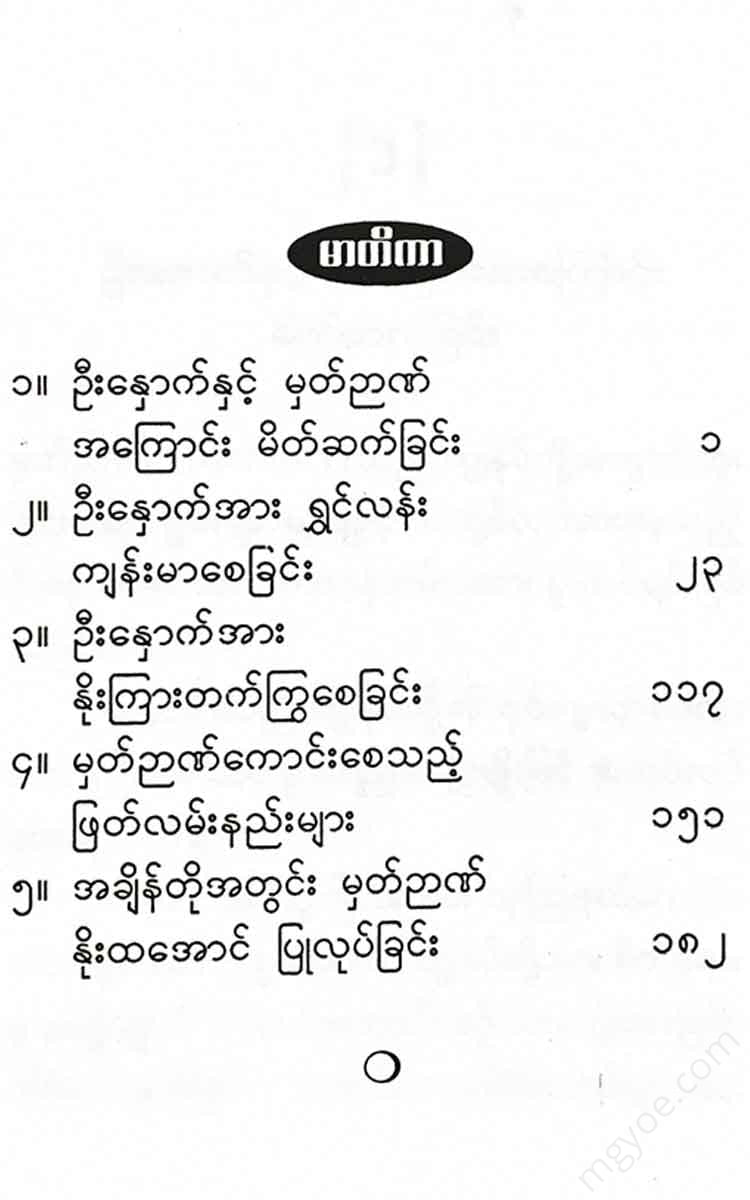စိတ်ကူးချိုချိုစာပေ
Aung Hlaing - How to have a good memory
Aung Hlaing - How to have a good memory
Couldn't load pickup availability
[ 1]
About the brain and memory
Introduction
Memory is a special function of the brain that works for us with extraordinary abilities.
The brain powers our entire body with a variety of amazing abilities. The unique and amazing functions of the brain allow us to experience a variety of emotions. It is an important part of the body that is capable of performing various processes such as thinking, dreaming, storing information in memory, and finding solutions to various problems.
In other words, it can be said to be a vast knowledge bank that can hold as much knowledge and skills as it can.
Memory is an intangible state that is based on or dependent on the brain. Without the brain, there would be no memory.
The brain helps us remember the events, real or imagined, that we encounter every day.
The brain is a complex organ that weighs between 1 and 1.5 kg and uses nearly a quarter of the total energy in our body.
The brain can process information more accurately than a computer, which claims to be able to "process large amounts of information with high efficiency."
Imaging studies of the inside of the brain have shown that the entire brain is constantly active, even while we sleep.
If one part of the brain is damaged, about 90% of our body's functions can stop.
Clinical research on the brain has shown that the brain performs two major functions: command and control.
neurons (nerve cells)
A type of nerve cell that forms the nervous system.
This neuron (= nerve cell) is 28 2:6$ood awake.
nervous system
The nervous system, which includes the brain, spinal cord, and nerves, is responsible for controlling our movements and sensing various sensations in the body, such as heat, cold, and pain.
nerves
Nerve fibers between the brain and body parts.
Spinal cord
A group of nerves within the spinal cord that connects the brain to all parts of the body.
The brain's command and control ability
The brain is the central hub for the command and control functions of the nervous system.
Our brain contains over 100 billion nerve cells (=neurons), and they are constantly alert.
Nerve cells can transmit various types of stimuli - arousal, arousal, and emotion.
It is also called "gray matter" because nerve cells are the "gray" part of the brain and spinal cord.
In addition, the brain contains over 1 trillion " supporting tissue" called glial cells (=meuroglia) that support the brain and spinal cord. This is called "white matter".
* glial cells = neuroglia = supporting tissue
Gray matter='brain tissue'
'Tissues' are formed by the combination of 'cells'.
Glial cells = neuroglia ( supporting tissue ) connect each "neuron" or "nerve cell" to its companion cells, up to 10,000 in number . Through them, they are connected (to each other) like a network to provide effective support for memory.
The 'brain stem' , the central part of the brain at the base of the skull, is called the 'reptilian brain'.
* brain stem=reptilian brain
The 'brain stem' continues down the skull and forms the 'spinal cord'.
The 'brain stem' can command and control the emotional processes we experience throughout our lives, such as fear, anger, hiding, running, fighting, etc.
During a period of heightened emotionality, our brain stem will be overwhelmed by the urges to fear or anger. For example, when someone is arguing with us, which escalates to a violent confrontation, the 'brain stem' is stimulated to escalate the problem or to control the problem.
The nature of the brain stem can provide more intense stimulation for those who are easily angered, or provide necessary control for those who are calm.
Therefore, it has been found that we can train our brain to exercise control as needed, and that it can be used in practice to improve memory functions.
